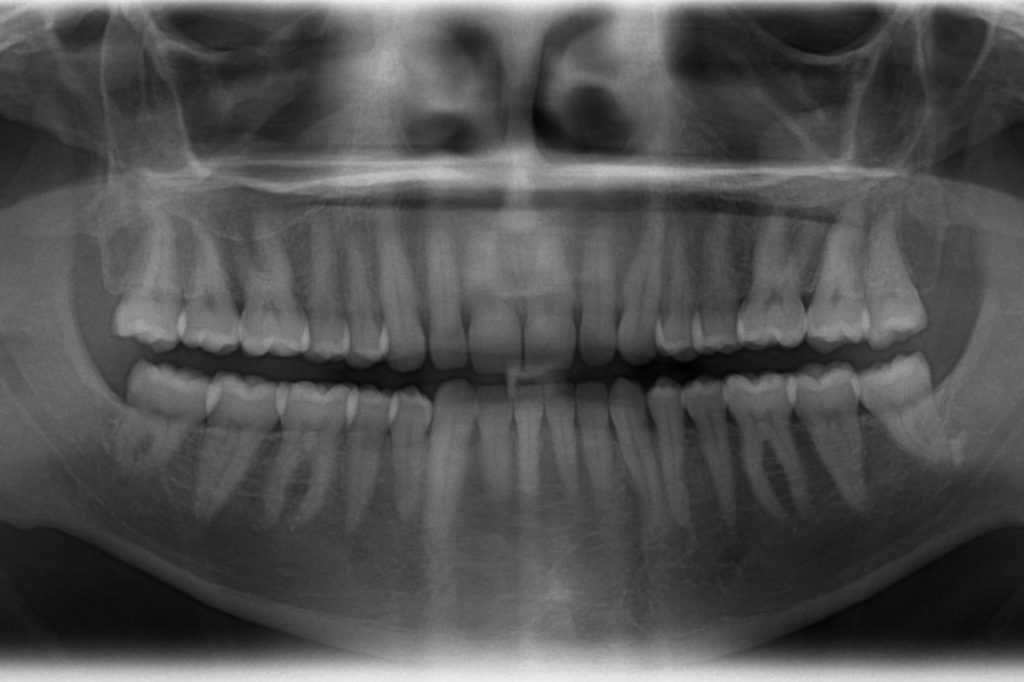
Often root canals in teeth cause chronic bacterial infection around the root of the tooth and surrounding gum, called apical periodontitis. Chronic infection results in chronic inflammation, which can make us more susceptible to cancer. Chronic infection stemming from root canalled teeth occurs 50-90% of the time and is difficult to eradicate, other than by removing the tooth.
The majority of bacteria causing infection in root canalled teeth are anaerobic gram negative strains. In one study, 74 strains of bacteria were discovered in nine root canalled teeth with apical periodontitis, with 55% of those bacteria being previously unidentified species. Most teeth were homes to an average of 10 species of bacteria. Species frequently found in root canalled teeth include Streptococcus species (47%), Enterococcus faecalis (47%), Lactobacillus species (35%), Dialister invisus (29%), Eubacterium infirmum (29%), Prevotella intermedia (29%), Selenomonas sputigena (29%), Synergistes oral clone BA121 (29%), Treponema denticola (29%), Pseudoramibacter alactolyticus (32%), Bacteroidetes clone X083 (26%), Olsenella uli (10.5%), Synergistes clone BA121 (10.5%), Fusobacterium nucleatum (10.5%), Porphyromonas endodontalis (10.5%), Dialister clone BS016 (5%), Filifactor alocis (5%), Parvimonas micra (5%), and the fungus Candida albicans (6%).
Certain bacteria associated with apical periodontitis can form dense colonies called “biofilms”, which are extremely resistant to both antibiotic therapy and the body’s immune system surveillance. Bacterial biofilms commonly line the root canal surface, and can contain rods, cocci, filaments and spirochaetes. A common bacteria associated with biofilms is Bacillis subtilis.
Bacteria are also present in the dentin tubules. At least one common bacteria present in root canals (Enterococcus faecalis) also contains a virus within it, infecting the root canal with both itself and a virus. When infection is present in teeth, the body mounts a defence reaction utilizing a variety of cell types, intercellular messengers, antibodies, and special molecules. As the bacteria die and disintegrate, they release endotoxins from their cell walls. These endotoxins activate macrophages (a particular kind of white blood cell) to make several potentially harmful molecules, including tumor necrosis factor (TNF-), interleukin 1 (IL-1), growth factors, prostaglandins and leukotrienes that contribute to inflammation. In addition, T-lymphocytes are stimulated to produce TNF-β; PMNs produce the prostaglandin PGE2; and leukotriene LTB4 is increased.
These molecules then circulate systemically in the bloodstream and promote both inflammation and cancer. For example, in a Korean study, women who had greater activity of TNF-β genes demonstrated an increased risk of postmenopausal breast cancer. In studies of breast cancer tumours in dogs, a correlation was found between expression of interleukin IL-1 and IL-6 and metastasis, or cancer spread.
Composite plastic fillings containing bisphenol A can stimulate growth of breast cancer cells. When possible, use ceramic rather than plastic fillings.
It may be better to pull a tooth than to have root canal, to prevent chronic inflammation and susceptibility to cancer.
- Genetic polymorphisms of TGF-beta1 & TNF-beta and breast cancer risk.
- Lymphocyte Infiltration, Expression of Interleukin (IL) -1, IL-6 and Expression of Mutated Breast Cancer Susceptibility Gene-1 Correlate with Malignancy of Canine Mammary Tumours.
- Pathogenesis of apical periodontitis and the causes of endodontic failures.
- Molecular analysis of the root canal microbiota associated with endodontic treatment failures.
- Microorganisms in root canal-treated teeth from a German population.
- Identification and characterization of clinically isolated biofilm-forming gram-positive rods from teeth associated with persistent apical periodontitis.
- Estrogenicity of bisphenol A and bisphenol A dimethacrylate in vitro.
- [Hormone dysregulators. Pseudo-estrogens in dental composite resins and sealanta?]
- Are sealants doing more than preventing caries?
- Bacteria in the apical root canal of teeth with primary apical periodontitis.
- Microflora in teeth associated with apical periodontitis: a methodological observational study comparing two protocols and three microscopy techniques.
- Endodontic and salivary isolates of Enterococcus faecalis integrate into biofilm from human salivary bacteria cultivated in vitro.
- Bacteriophages induced from lysogenic root canal isolates of Enterococcus faecalis.
- Consequences of and strategies to deal with residual post-treatment root canal infection.
- Quantification of endotoxins and cultivable bacteria in root canal infection before and after chemomechanical preparation with 2.5% sodium hypochlorite.
- Wound healing of apical tissues after root canal therapy: a long-term clinical, radiographic, and histopathologic observation study.
- Cytotoxicity and estrogenicity of Invisalign appliances.
- Characterization and in vitro estrogenicity of orthodontic adhesive particulates produced by simulated debonding.



